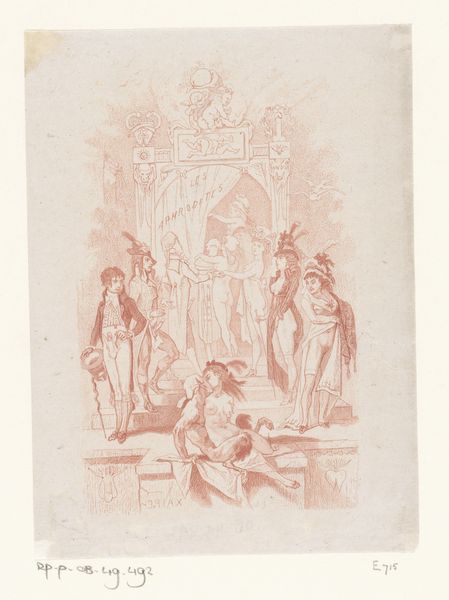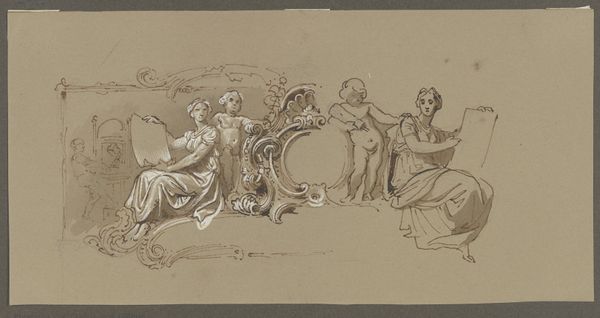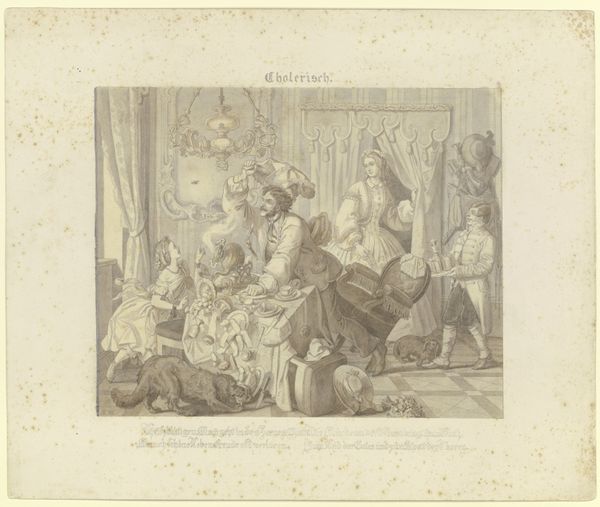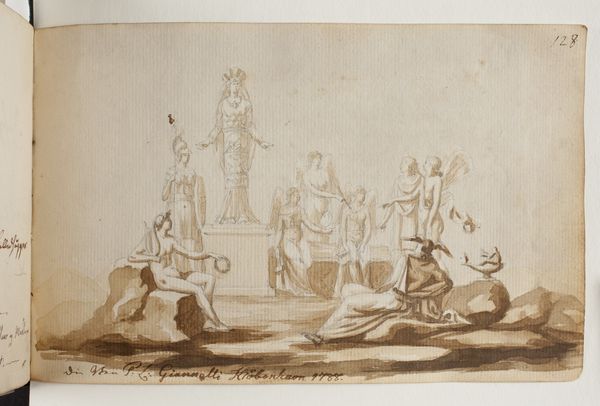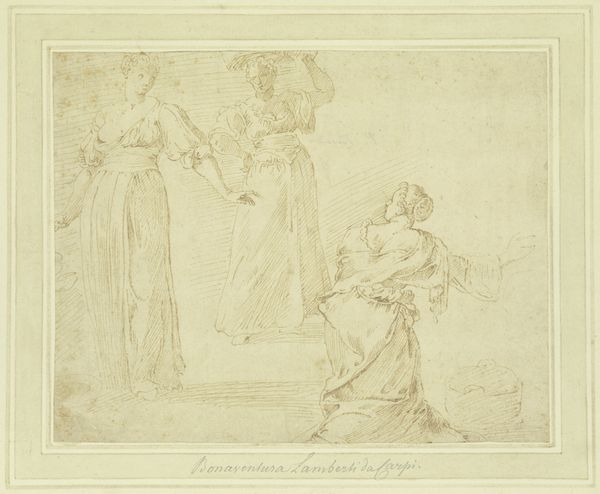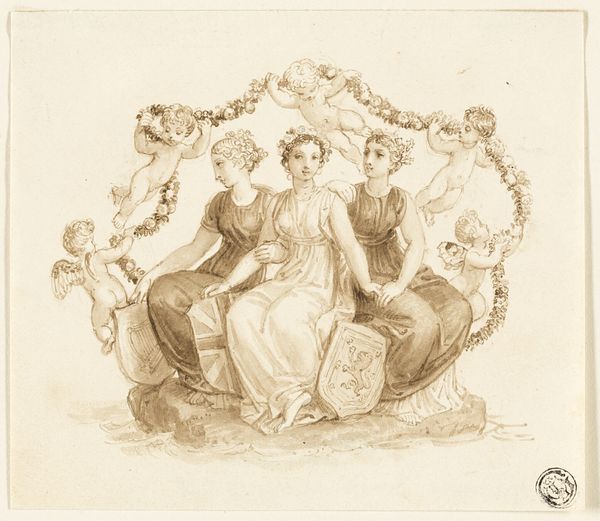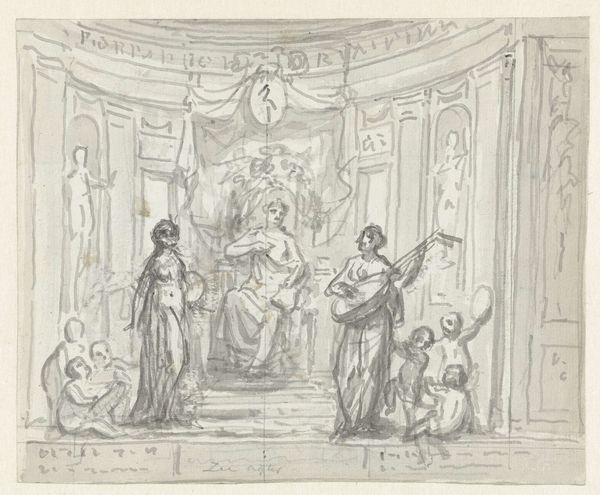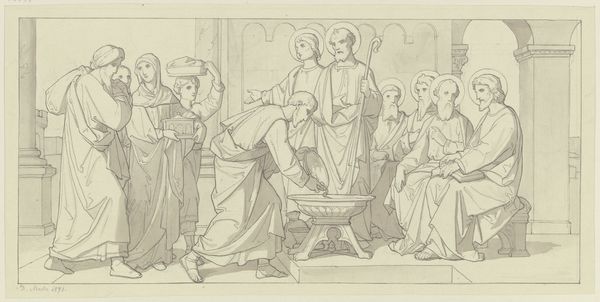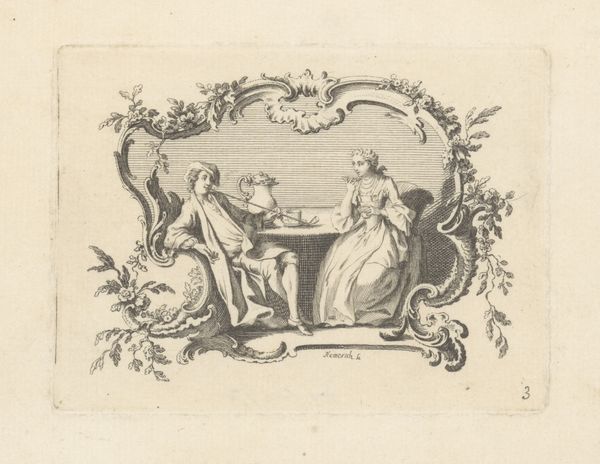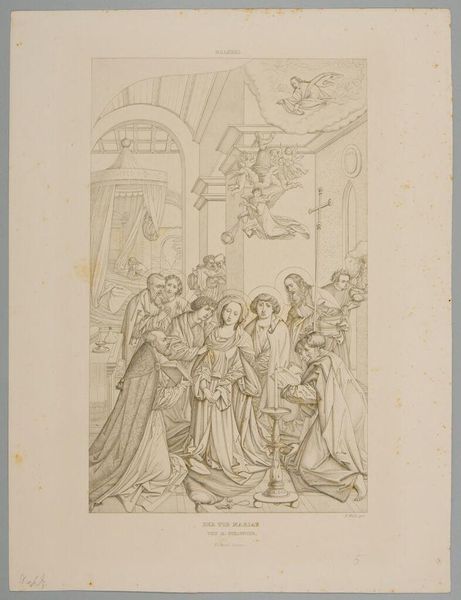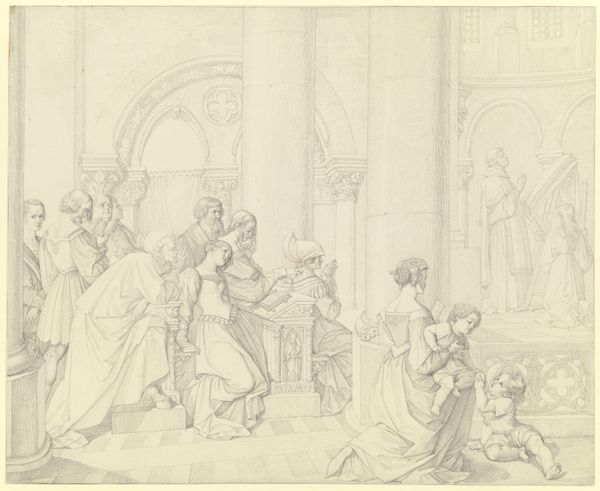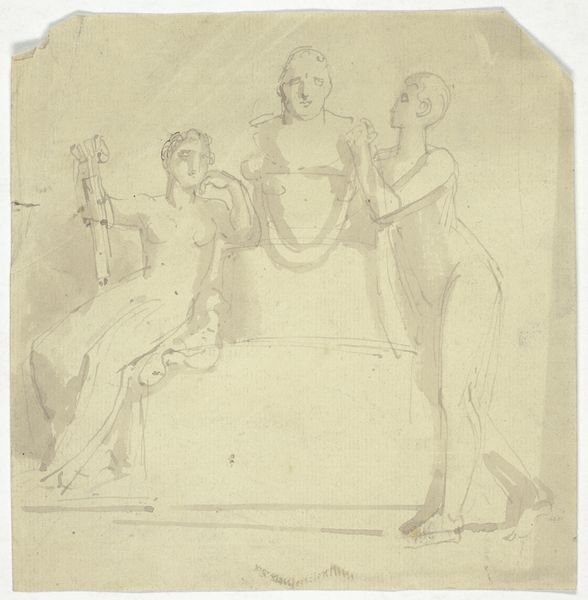
drawing, print, etching
#
drawing
#
neoclacissism
#
allegory
# print
#
etching
#
classical-realism
#
etching
#
figuration
#
history-painting
Dimensions: 7 3/16 x 13 5/16 in. (18.3 x 33.8 cm)
Copyright: Public Domain
Editor: So, this is "Cybele and Three Attendants," an etching by Antoine Léonard Du Pasquier from 1801. The scene feels like a classical frieze, all flowing drapery and serene figures. The composition is balanced, almost rigidly so. I'm curious, what does this artwork evoke for you? Curator: What strikes me immediately is the conscious revival of classical imagery during a time of immense social upheaval in France. Neoclassicism, as an art movement, served a very specific purpose: it invoked the perceived stability and order of ancient Rome and Greece. Think about it – why depict Cybele, a Phrygian goddess associated with fertility and nature, at this particular historical juncture? Editor: That’s interesting. It’s more than just aesthetic; there's a political undercurrent? Curator: Precisely. It's about crafting a visual language that implicitly comments on the socio-political landscape. These images gained currency not solely within art institutions, but as instruments in civic rituals. Notice the setting itself—the women perform some service. To whom are they dedicating their ritual? How do representations of women—particularly powerful goddesses—function in shaping public perception of ideal virtues, of order, of society itself? Editor: It sounds like Pasquier wasn't simply drawing inspiration, but actively participating in a larger cultural narrative. I always viewed neoclassicism through a purely art-historical lens. But your approach has given me much food for thought on how artistic choices often resonate with their own place and time, that their impact goes beyond the museum. Curator: Indeed. By questioning the motives and contexts surrounding art's creation and reception, we can arrive at a more enriched and informed reading. It really gives one pause to reflect on these forces and the social function of the work itself.
Comments
No comments
Be the first to comment and join the conversation on the ultimate creative platform.

